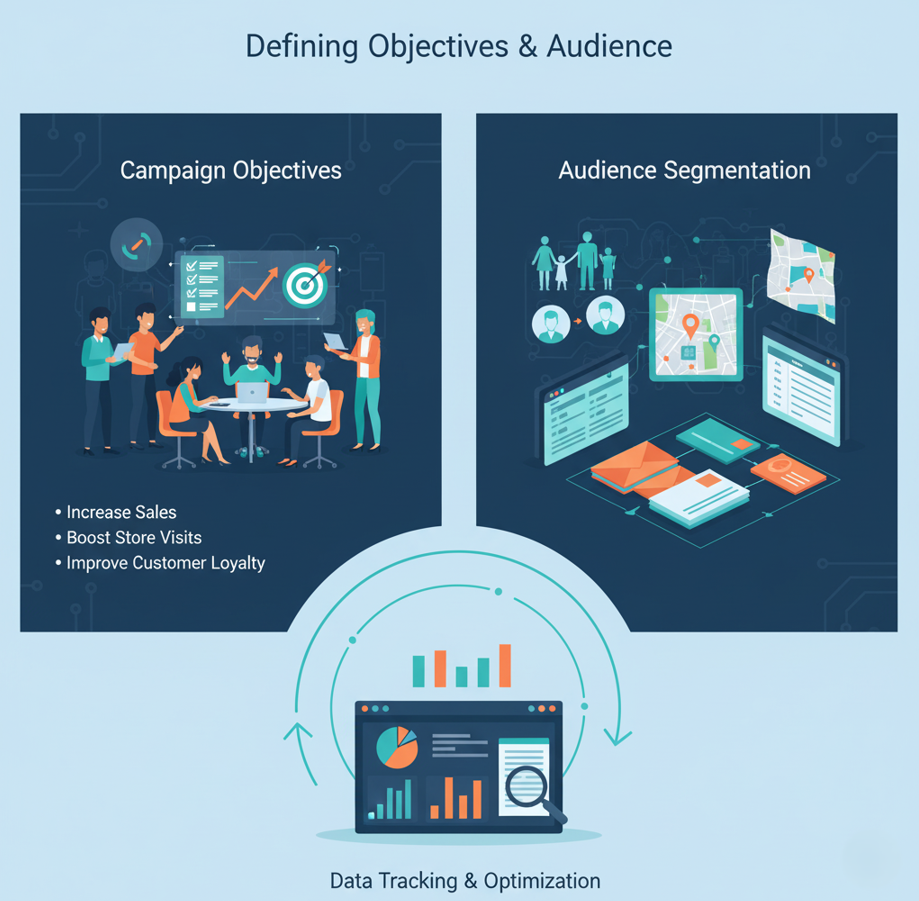In an age dominated by digital ads and social media feeds, direct mail marketing remains a powerful way to cut through the noise and reach customers in their homes or workplaces. When executed effectively, a well-designed postal campaign can deliver impressive response rates, strengthen brand recognition, and drive sales. This comprehensive guide explores every aspect of direct mail marketing, from planning and design to printing, mailing, and measurement. Whether you’re a small business owner or a seasoned marketer, you’ll discover proven strategies to revitalize your brand with traditional offline outreach.
What Is Direct Mail Marketing?
Direct mail marketing refers to the process of sending physical promotional materials—such as postcards, letters, brochures, or catalogs—directly to a targeted list of prospects or existing customers. Unlike digital channels, direct mail relies on tangible assets that recipients can hold, open, and retain. This tactile interaction often leads to higher recall rates and a personal connection that digital messages struggle to achieve. Today’s marketers pair classic mail formats with modern data-driven tactics to maximize relevance and response.
Key Benefits of Direct Mail
Direct mail marketing offers several advantages:
- High Visibility: With so many digital ads filtered away or ignored, a physical piece of mail stands out on the kitchen counter or desk.
- Personalization: Data enrichment and variable printing allow you to tailor offers, names, and messages for each recipient.
- Credibility: A professionally designed mailer conveys legitimacy and trustworthiness.
- Measurability: Unique codes, personalized URLs (PURLs), and QR codes make it easy to track responses and ROI.
- Longevity: Physical mail can be reviewed multiple times, pinned up, or shared with family and friends.
Step 1: Defining Objectives and Audience

Every successful direct mail campaign begins with clear goals. Are you aiming to acquire new customers, re-engage lapsed buyers, or promote a seasonal sale? Defining objectives helps determine your call to action, offer design, and success metrics. Next, build or refine your mailing list. Leverage first-party data from past purchasers, sign-ups, and event attendees. Consider renting or purchasing targeted mailing lists from reputable list brokers if you need to expand your reach. Segment your audience by demographics, purchase behavior, or geographic location to increase relevance.
Step 2: Crafting a Compelling Message
Your headline or lead statement must grab attention immediately. Whether it’s a bold discount percentage, a free gift, or an intriguing question, the opening line compels recipients to read on. Keep copy concise and benefit-driven: explain what customers gain and why they should act now. Use personalized salutations and tailor the offer to the segment’s needs. Remember that less is often more in direct mail—white space and clear sections help readability.
Step 3: Designing the Mail Piece
Design plays a critical role in direct mail response. Work with a professional graphic designer or use advanced mail-piece templates to ensure your layout is visually balanced and on-brand. Key design tips include:
- Consistent Branding: Use brand colors, logos, and fonts that align with your overall identity.
- Clear Hierarchy: Highlight the headline, offer, and call to action with contrasting text sizes or colors.
- Imagery: Include high-quality photos or illustrations that evoke emotion and context.
- Call to Action (CTA): Make the CTA button or text stand out. Use actionable verbs like “Claim,” “Order,” or “Schedule.”
Step 4: Personalization and Variable Data
Advanced printing technology allows you to customize each mailer with names, offers, images, or copy blocks based on recipient data. Personalization can boost response rates by up to 135 percent. Consider these tactics:
- Variable Headlines: Swap headlines to match customer interests or past purchases.
- Custom Offers: Present incentives that reflect buying history or demographic profiles.
- Dynamic Imagery: Change photos for different segments (e.g., families, singles, seniors).
Step 5: Printing and Mailing Logistics
Partner with a reliable print-and-mail provider to handle production and USPS or courier drop-offs. Confirm these key details:
- Paper Stock and Finish: Choose between matte, gloss, or specialty stocks for a premium feel.
- Envelope Type: Mailing envelopes, postcards, or folded self-mailers each have unique costs and open rates.
- Address Hygiene: Clean and validate addresses to reduce returned mail and postage waste.
- Postage Rates: Compare Automated, Presorted, and First-Class options for cost efficiency and delivery speed.
Step 6: Integrating Digital Touchpoints

Hybrid campaigns that blend offline and online channels deliver superior results. Incorporate QR codes that link to landing pages, PURLs for personalized experiences, or SMS opt-in prompts. Follow up with email reminders or retargeting ads to reinforce your message. Tracking pixels on digital properties let you attribute web traffic and conversions back to the mailer, providing a holistic view of campaign performance.
Step 7: Measuring ROI and Optimizing
Set up clear metrics before launch. Common KPIs include response rate, cost per lead, conversion rate, and overall campaign ROI. Use unique promo codes or tracking links to isolate direct mail impact. After the mailing cycle, analyze results and run A/B tests on variables such as mailer format, copy, or offers. Continuously refine your targeting, messaging, and design to improve future performance.
Case Study: A Local Boutique Success
Consider the example of Maple Street Boutique, a small fashion retailer seeking to boost autumn sales. They segmented customers by past purchase data, sending personalized postcards offering 20 percent off fall sweaters. A QR code led recipients to a mobile-friendly landing page showcasing curated items. Within two weeks, the campaign generated a 4.5 percent response rate—double the industry average—and a 300 percent ROI. Lesson: targeted offers and seamless offline-to-online experiences drive measurable success.
Common Pitfalls to Avoid
Even seasoned marketers stumble if they overlook these issues:
- Overloading Copy: Too much text overwhelms readers—keep it focused and scannable.
- Ignoring Deliverability: Outdated or incorrect addresses lead to wasted spend.
- Weak CTA: Without a clear next step, recipients may toss the mailer aside.
- No Follow-Up: Failing to reinforce the message online or via phone reduces impact.
Budgeting Tips for Maximum Impact
Allocate your budget strategically: prioritize high-quality design and printing, invest in reliable mailing lists, and reserve funds for follow-up digital ads. Negotiate volume discounts with printers and take advantage of USPS presort pricing. Track every dollar spent and compare it to incremental revenue generated to ensure cost-effectiveness.
Conclusion
Direct mail marketing remains an underutilized channel that can deliver outstanding results when combined with modern personalization and tracking techniques. By defining clear objectives, crafting engaging mailers, integrating offline and online touchpoints, and measuring meticulously, you can revitalize your brand and achieve impressive ROI. Start small, test variables, and scale successful campaigns to make direct mail a cornerstone of your traditional marketing strategy.
Learn more about: Running a Business in a Traditional Market: Real Challenges and Winning Strategies









